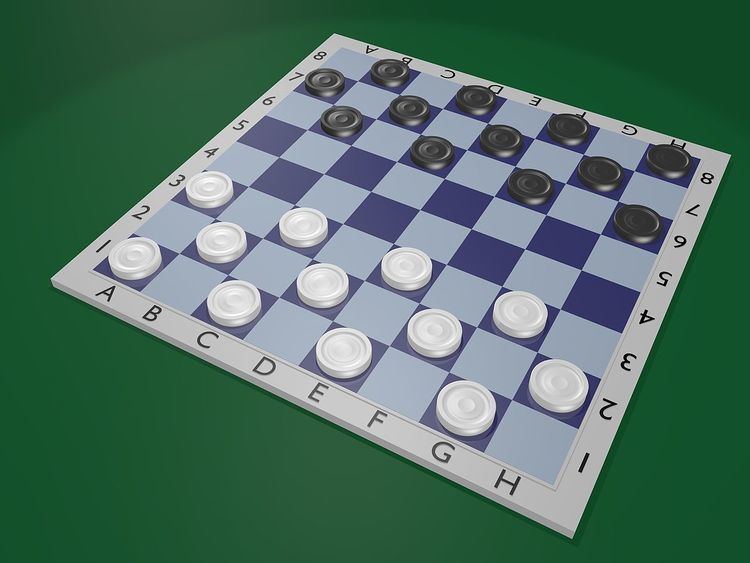Players 2 Random chance None | Setup time 10–60 seconds | |
 | ||
Genre(s) Board gameAbstract strategy game Playing time | ||
Russian draughts (also known as Shashki or Russian shashki) is a variant of draughts (checkers) played in Russia and some parts of the former USSR, as well as parts of Eastern Europe and Israel.
Contents
Rules
As in all draughts variants, Russian draughts is played by two people, on opposite sides of a playing board, alternating moves. One player has dark pieces, and the other has light pieces. Pieces move diagonally and pieces of the opponent are captured by jumping over them.
The rules of this variant of draughts are:
Notation
Games and positions are recorded using a special notation – algebraic notation. The vertical columns of squares are labeled from a to h. The horizontal rows of squares are numbered 1 to 8 starting from White's side of the board. Thus each square of the board has a unique identification of file letter followed by rank number.
Sport
Official rules were printed in Russia in 1884. First Russian championships was held in 1894. Next three took place in 1895, 1898 and 1901.
In Soviet Union first championship was in 1924. From this year to 1991 have been 51 men's championship and 35 women's. Since 1992 took place championship of Russian Federation, Ukraine, Belarus and some other countries former USSR.
In 1993 appeared Word championship at Russian draughts as part of World championship in draughts-64 (Russian and Brazilian variant — since 1985) under the auspices of Section-64 World Draughts Federation. Also are European championship at Russian draughts as part of European championship in draughts-64 (Russian and Brazilian) and national championships.
Games based on main rules of Russian draughts
There are several variants of draughts games based on main rules of Russian draughts. Amongst the most popular ones is ″Poddavki″, where a player wins if he doesn't have any legal moves on his turn (either by giving up all of his checkers or having them being blocked). Another popular variant is called "Bashni" ("Towers"), where captured pieces are not removed from the game, but placed underneath the capturing piece, forming a "tower".
Exist invited variant with the 10×8 board (2 additional columns, labelled 'i' and 'k'). There are official championships for shashki and its variants.
Also exist variant invented Grandmaster Vladimir Vigman in which each player have 24 pieces (two full set) — one on the white squares, second on the black. Each player play two game simultaneously: one game at white squares, other game at dark squares. Total result is sum results of both games.
